& Construction

Integrated BIM tools, including Revit, AutoCAD, and Civil 3D
& Manufacturing

Professional CAD/CAM tools built on Inventor and AutoCAD
10 min read
Welcome to the 1880s. There’s a massive war going down between Direct Current (DC) and Alternating Current (AC). This War of the Currents, like any other conflict in human history, has a set of competing ideas on how to best deliver electricity to the world. And of course, there’s a ton of money to be made along the way. So would Thomas Edison and his DC battalion hold firm, or would George Westinghouse and his AC Armada claim victory? This was a battle for the future of humanity, with plenty of foul play involved. Let’s see how it went down.
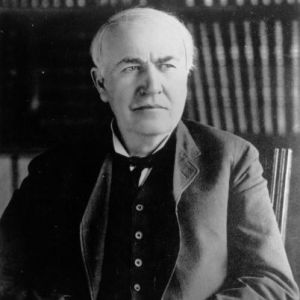
Thomas Edison. This guy knows his stuff, credited with over 1,000 inventions while still being a successful businessman (Image source)
Edison was a household name back in the day, with over 1,000 inventions under his belt. And you’d be hard pressed not to find his name being thrown around town in the 1880s, with creations like the phonograph, movie camera, and light bulb that changed how we live, all powered by Edison’s direct current.
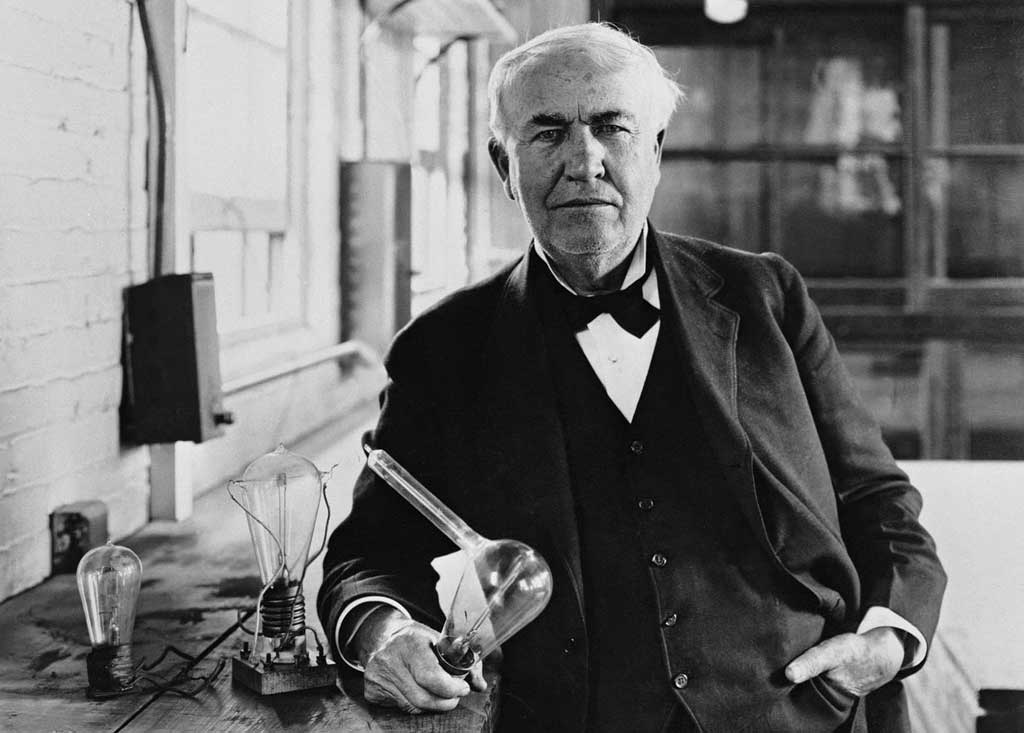
Here’s Edison with one of his first incandescent light bulbs, which took over 1,000 attempts to make. (Image source)
Not only was Edison a great inventor, but he was also a sharp businessman and was able to turn nearly all of his inventions into commercial successes. The same couldn’t be said for his ex-employee, Nikola Tesla, who practically gave his AC patent away to George Westinghouse, a move that would ultimately turn the tide of battle.
Needless to say, Edison had a ton of pride riding on his inventions and the direct current system, and there was also a whole lot of money to be made. So when it came time to decide how the future of America and Europe would be powered, Edison was on the offensive.
If you’ve got a smartphone or laptop, then you have Thomas Edison and his direct current to thank for your newfound addiction to the internet. Direct current, unlike alternating current, is a whole lot easier to harness, as it provides a steady and consistent voltage, and can only flow in one direction – forwards.
The battery is an excellent example of how direct current works. One side is positive, and the other is negative. When you plug it into an electronic device, electricity only flows one way, from negative to positive. If you looked at the voltage of direct current on a graph, it would just be a straight line. No ups, no downs, it’s the steady source in the world of electricity.
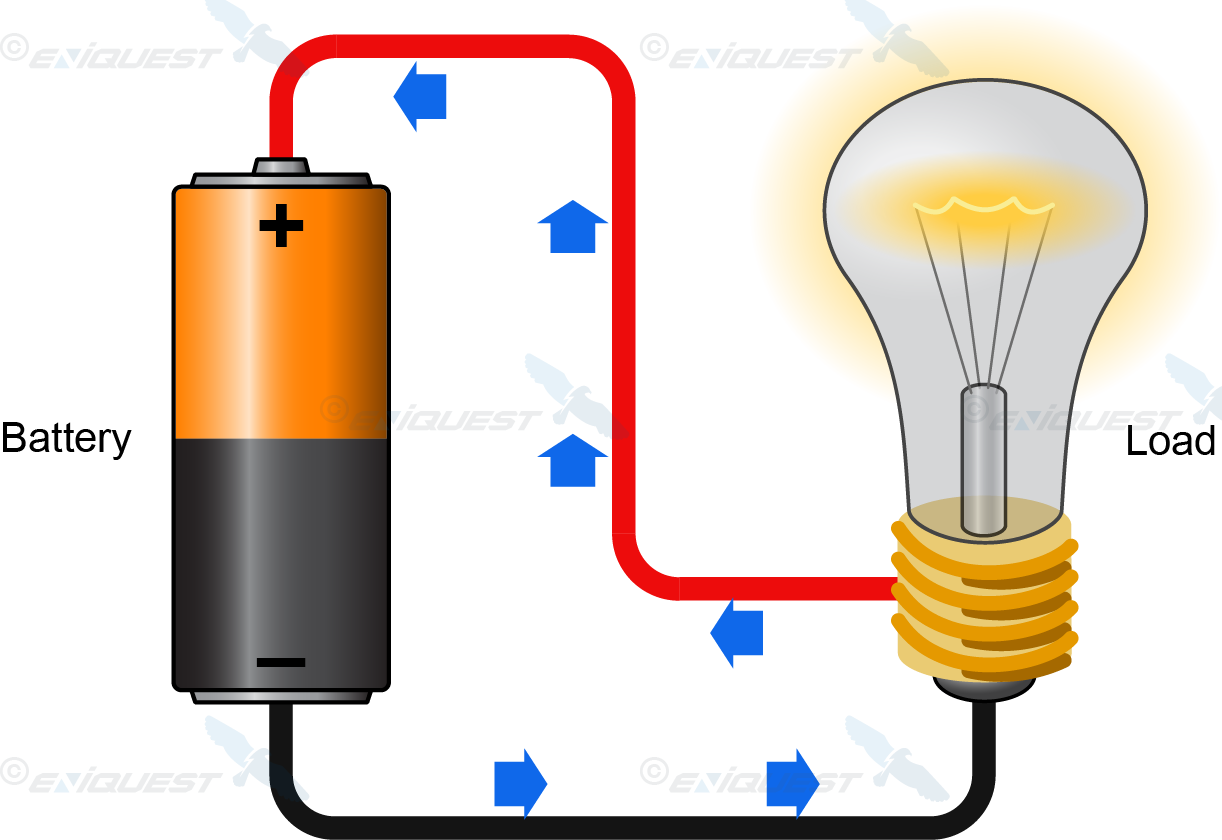
Batteries are an easy way to illustrate a direct current flow, out one side, in the other (Image Source).
But what’s the benefit of direct current being so consistent? The answer to that has to do with our newfound love for computers. Most digital electronics are powered by DC and for a good reason. Computers run on a binary system, which is basically a bunch of 1s and 0s woven together in insanely creative ways to make all of your apps, video games, and movies come to life. You know that Facebook feed you’re addicted to? All 1s and 0s. Or that smartphone you can’t pry your fingers away from? Made possible by 1s and 0s.
The point being that this binary logic requires a very particular set of values. It either has to be 1 or 0, black or white. If it’s a 1, it’s on, and if it’s a 0, off. Anything in between doesn’t exist in the world of computers. Because DC voltage is always consistent, you always know if you’re in a state of positive charge, being on, or a state of negative or zero charge, being off. See the connection now? This allows computers to easily interpret what’s a 1, and what’s a 0 when using DC as a power source.

Get It? Binary magic powers all of our computer magic, those mysterious 1s and 0s. (Image source)
Despite all of its wonderful uses in things like smartphones, televisions, flashlights, and even electric vehicles, direct current does have three serious limitations:
These limitations were a huge problem for Edison as the War of Currents continued to unfold. How was he going to power an entire city, much less a country, when DC voltage could barely travel a mile without sputtering out? Edison’s solution was to have a DC power plant in every section of a city, and even in neighborhoods. And with 121 Edison power stations scattered across the United States in 1887, Edison thought the solution was in his grasp.

Edison power plant. Can you imagine this being next door?
But with his alternating current rival looming in the distance, Edison’s local power plant solution never came to be. A country like the United States needed a more robust system to provide power over hundreds of miles.
Alternating current is like your crazy next door neighbor that likes to talk to himself on his porch. His personality seems to switch from one minute to the next, and that’s exactly what alternating currently is all about, constant change. In AC, the flow of voltage will constantly change from positive to negative in a wave-like motion.
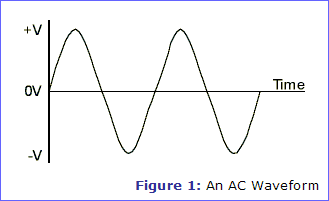
Here’s a simple AC sine wave, showing the back and forth motion from positive to negative voltage.
The way AC behaves might seem crazy and unpredictable, but it does have some great uses, including sending power to your home over long distances. Remember all of those power lines near your house? There’s alternating current flowing through those things. When it comes to sending electricity over long distances, AC can’t be beat.
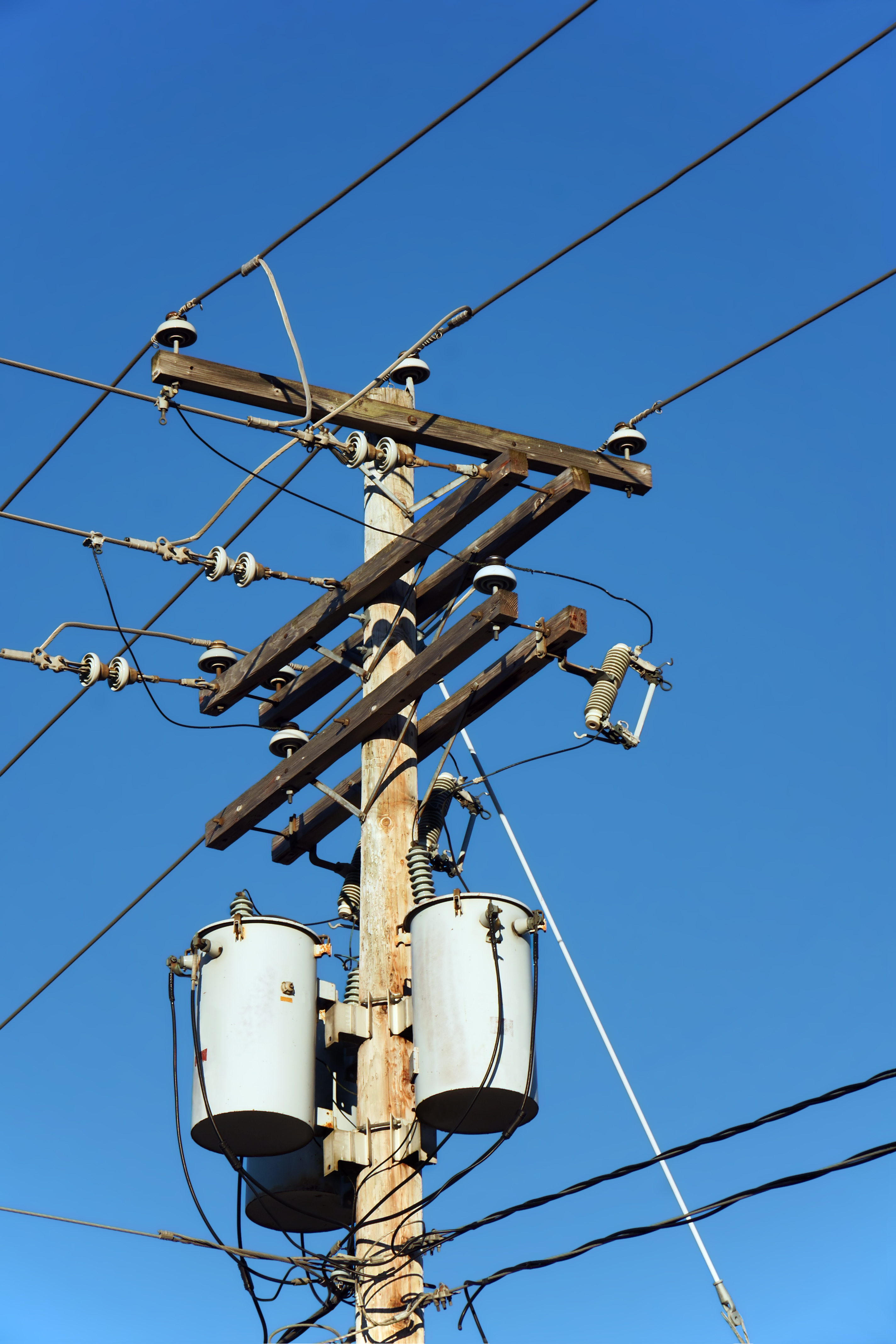
Look familiar? You’ll find transformers all over residential power lines, converting AC to DC.
You’ll find that nearly all of the homes and offices around the world are using AC in their outlets. AC is also used to power electric motors and other big appliances in your home, like dishwashers, fridges, and heaters. The one downside to AC is that it isn’t usable by things like your smartphone or laptop, which is why it needs to be transformed into DC first.
This is why nearly all of the power cables for your electronics have those unsightly boxes in the middle of the wire. Those take the AC electricity from your power outlet and transforms it into DC electricity that your electronics can digest.
Back in the War of the Currents, scientists and businessmen are starting to see the advantages of using AC over DC, and Edison was not happy. So over the next few years, Edison runs a propaganda campaign that basically villainizes alternating current.
This involved lobbying to the state legislatures. But Edison also did some strange stuff, like electrocuting animals in public with AC to show how dangerous it was compared to DC. Edison’s employees took it a step further by designing the first electric chair for the state of New York, powered by the enemy, alternating current.
To be fair, there were some serious safety concerns about alternating current, and for good reasons. Back in the Blizzard of 1888 in New York, one of the overhanging AC wires that carried up to 6000 volts broke in a nasty storm, which ended up electrocuting a child. But the problem was less AC’s fault, as much as it was power lines that had little to no insulation, with many wires that were no longer being maintained.
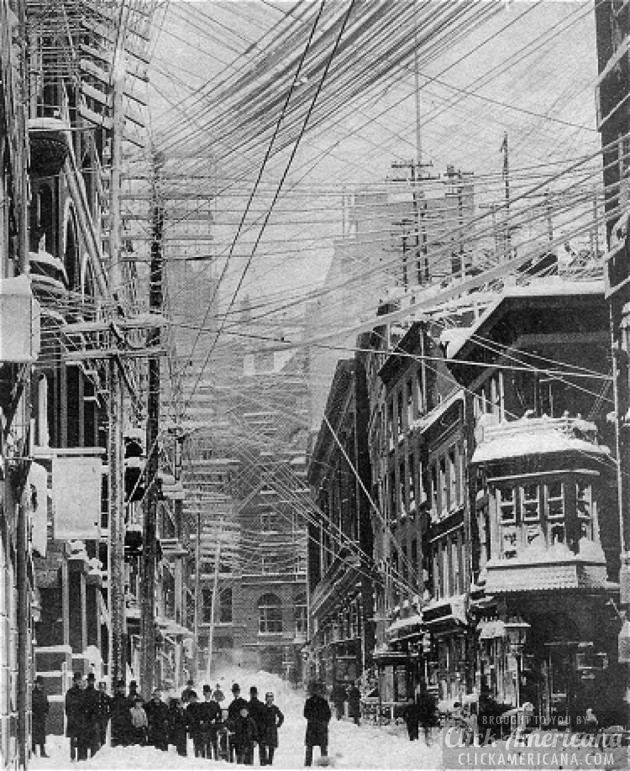
Look at all of those wires. It’s no wonder power lines broke in the Blizzard of 1888. (Image Source)
So with Edison on the offensive, telling lies and giving misinformation to anyone who would listen, George Westinghouse needed some backup to defend alternating current. And he found just the solution in a famous Croatian prodigy – Nikola Tesla.
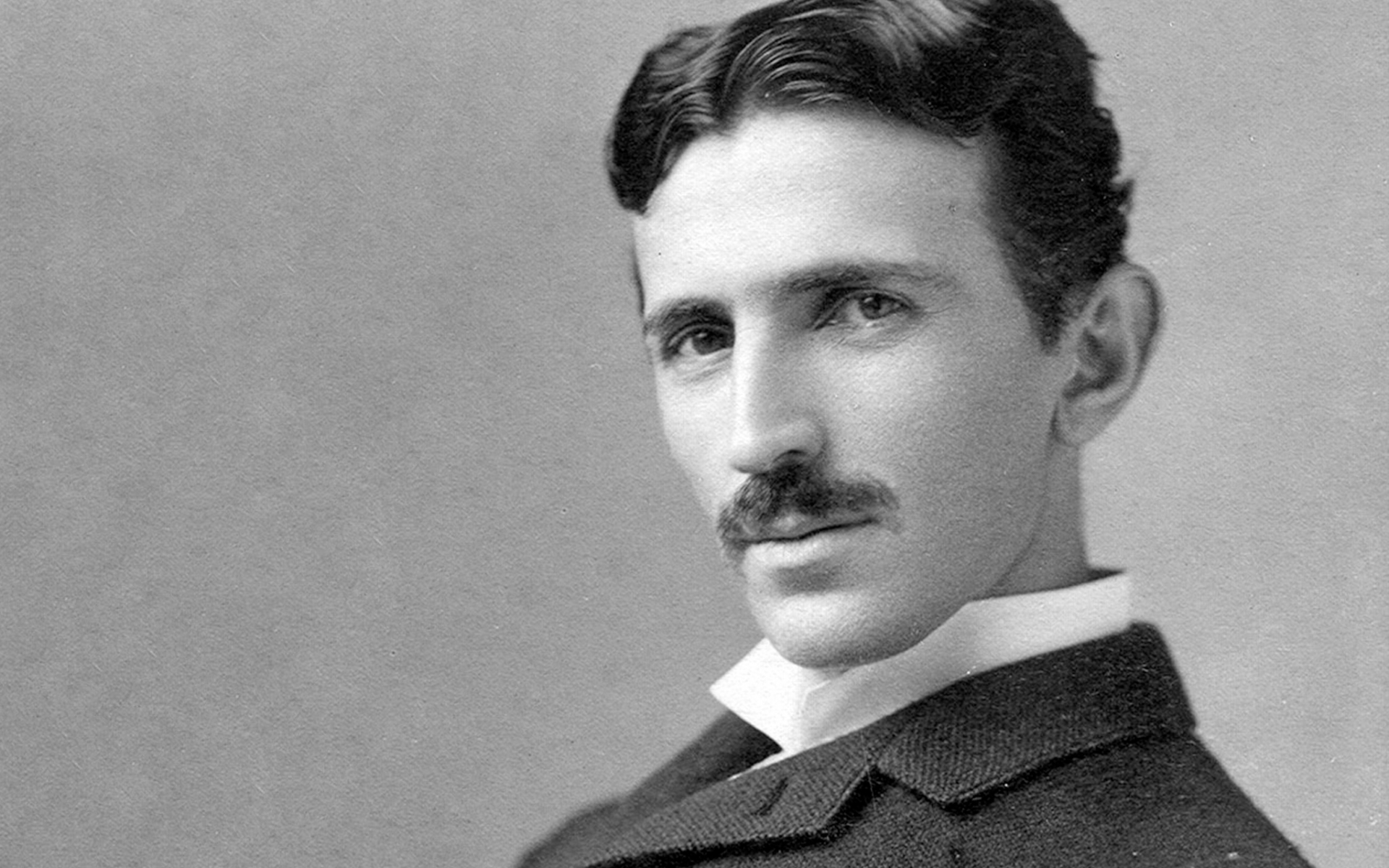
That’s one classy dude – Nikola Tesla, Serbian-American inventor, electrical engineer, mechanical engineer, and physicist. (Image source)
While Tesla deserves a blog post of his own, his contribution to the War of the Currents deserves to be mentioned here, as he helped turn the tide of battle. Tesla arrived in the United States in 1884 with just the clothes on his back. He first worked for Edison, and the two were inseparable, working day and night to improve Edison’s inventions. Sometimes friendships end, so did Edison’s and Tesla’s, with the two parting ways after a clashing of personalities.
Tesla went on to file patents for several AC electrical systems, which were later purchased by George Westinghouse for a whopping $60,000. The rest of Tesla’s life post-Westinghouse was a strange, downward spiral, as Tesla tried and failed to build a wireless communication system that would provide free electricity throughout the world.
This misstep would rob Tesla of all his finances in crushing bankruptcy. And after this defeat, Tesla was never the same and began to suffer from nervous breakdowns. The poor guy ended up dying alone in his apartment at the age of 85 in New York city, with only some pigeons as friends.
Despite Tesla having a rather troublesome and erratic life, his electrical systems ultimately gave AC the upper hand it needed to win the War of the Currents. The first victory came in 1891, at an exhibition in Frankfurt, Germany where the first long-distance transmission of AC was demonstrated, powering lights and motors. Some big wigs from General Electric just happened to be present at the event and walked away impressed. A year later the company started to invest in AC technologies.
George Westinghouse, with Tesla’s patents in hand, was also able to secure a contract to build a hydroelectric dam in Niagara falls that would transmit AC power to all of Buffalo, New York. This victory ultimately marked the slow and gradual decline of DC being used in the United States, and led to AC being adopted as the standard in both North America and Europe.
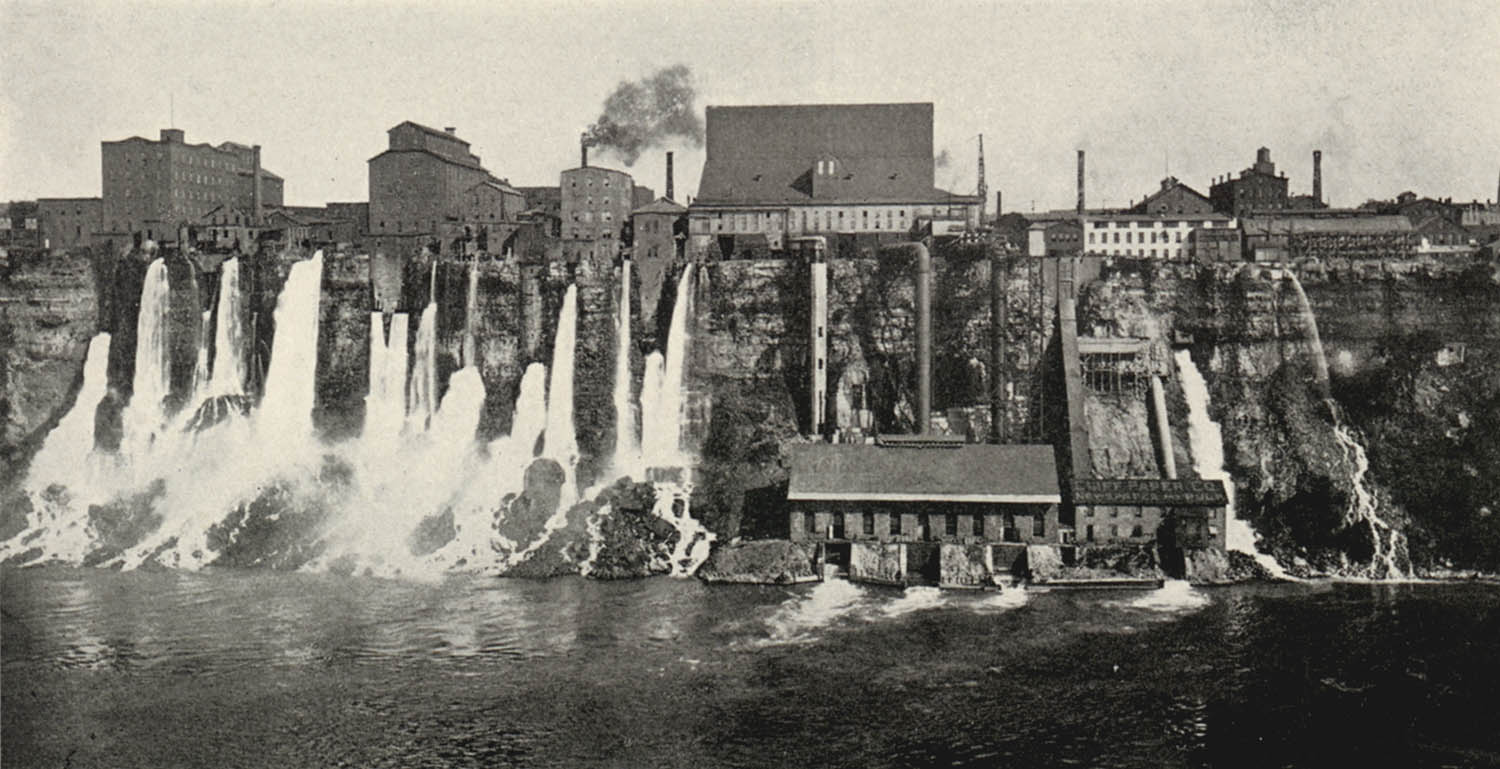
The hydroelectric dam in Niagara Falls was the final nail in the coffin for DC as a viable source to power whole cities. (Image source)
Today, the War of the Currents has been over for quite some time. There really wasn’t a victor in this war, as both AC and DC continue to exist peacefully side-by-side, each with their own specific uses and applications. But we do wonder, will this balance always be maintained? With the interest in producing electricity from local sources, like solar, wind turbines, etc… converting all of that AC power just to get it into your home, and then back into DC; this all leads to a lot of wasted energy.
Maybe Edison was onto something with his local power plant idea. We’ve started to see the resurgence of microgrids that put a new, modern twist on Edison’s vision, and it might just be how we power our homes in the future. And with Tesla recently unveiling a new solar roof and in-home battery pack, our future electricity could come from our very own backyards.
Harness the power of AC and DC and Subscribe to Autodesk EAGLE today.
By clicking subscribe, I agree to receive the Fusion newsletter and acknowledge the Autodesk Privacy Statement.
Success!
May we collect and use your data?
Learn more about the Third Party Services we use and our Privacy Statement.May we collect and use your data to tailor your experience?
Explore the benefits of a customized experience by managing your privacy settings for this site or visit our Privacy Statement to learn more about your options.